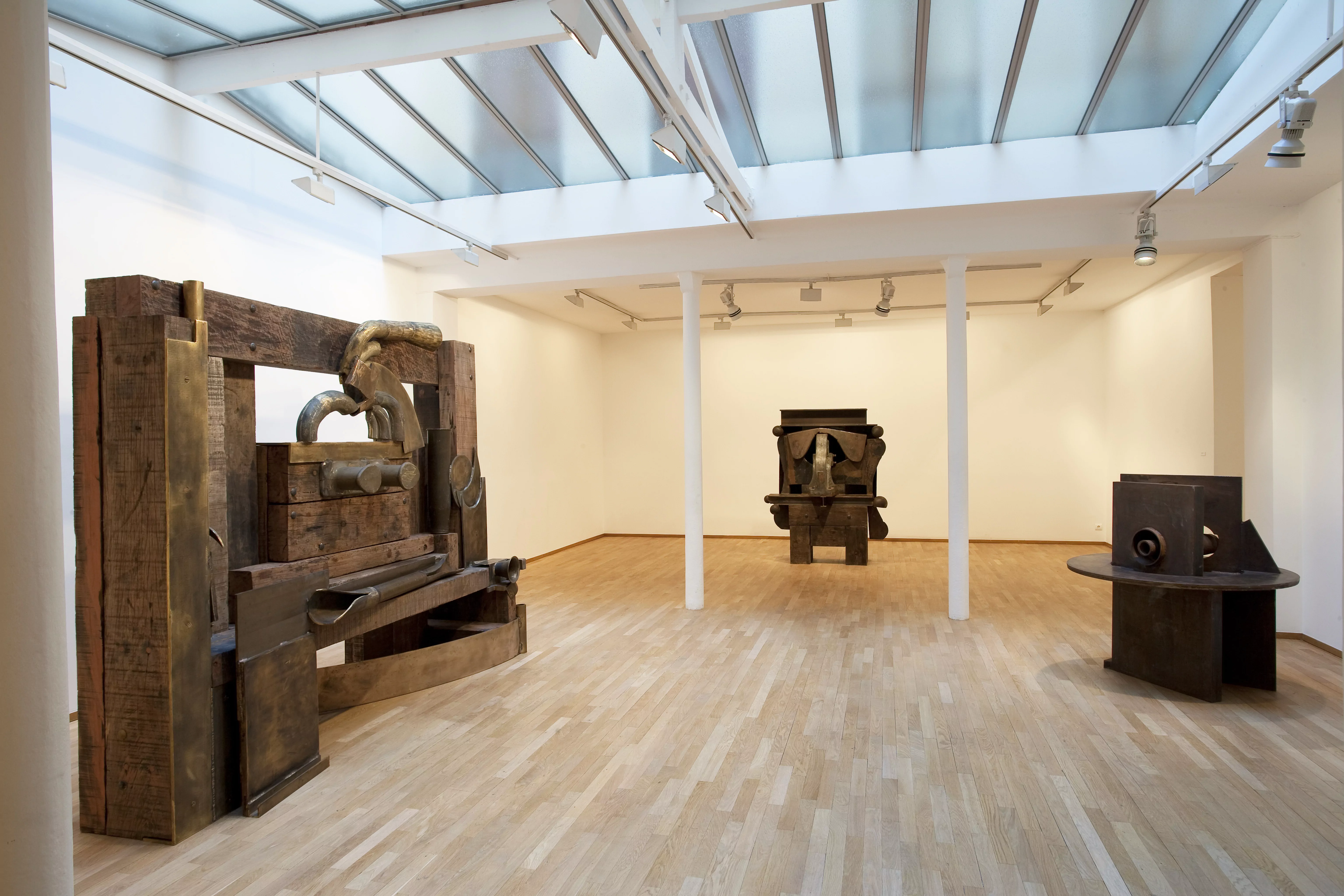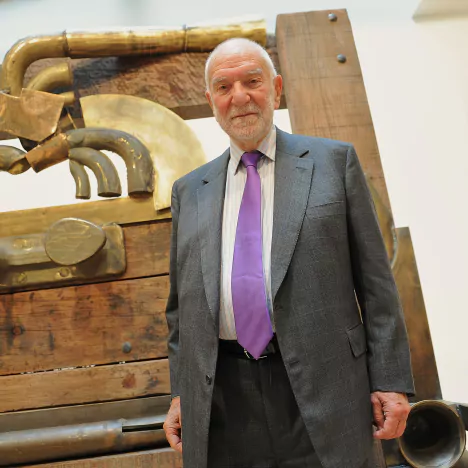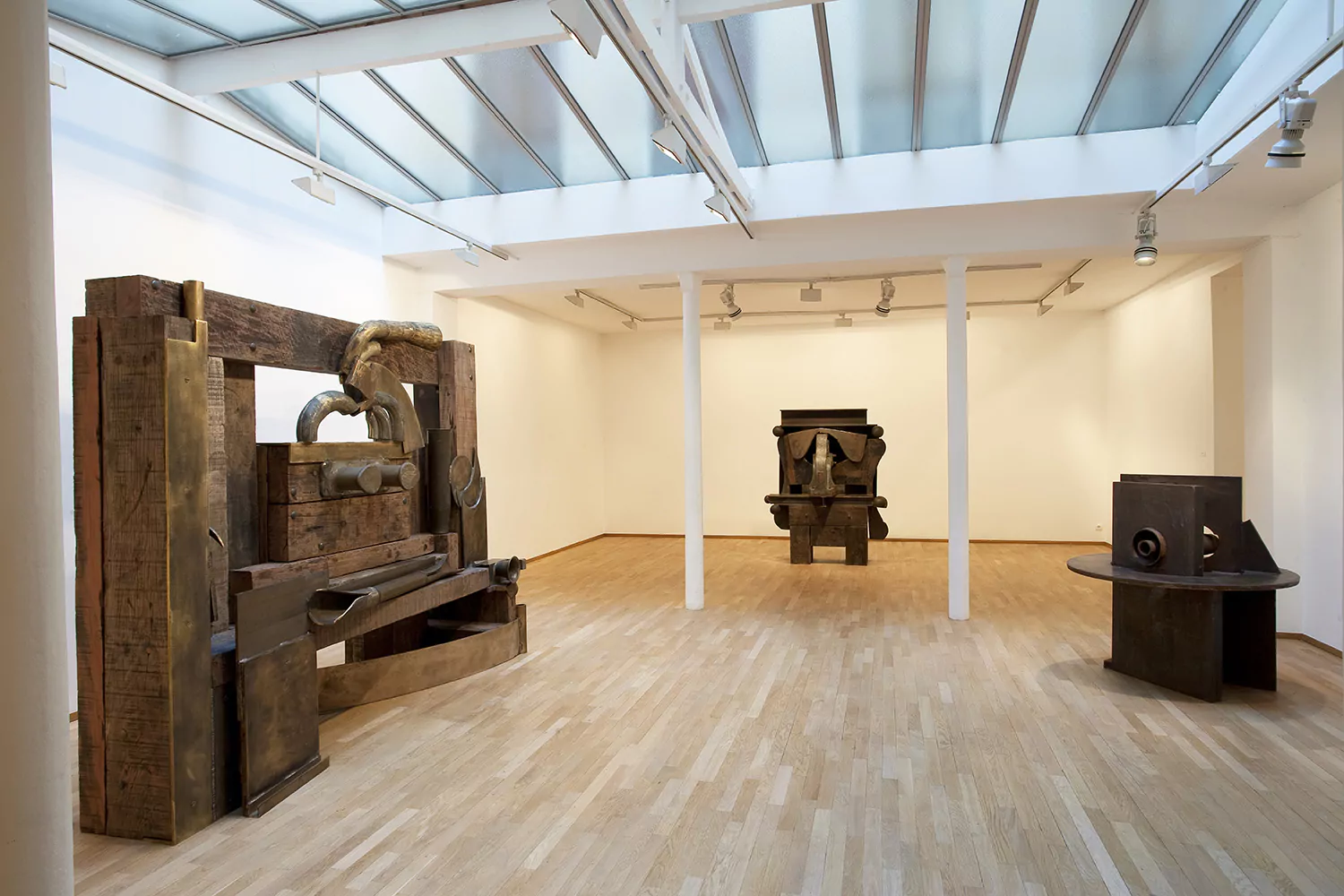
Anthony Caro
Upright Sculptures
Born in 1924 and knighted by the Queen of England in 1987, Sir Anthony Caro has taken the norms and even the definitions of sculpture in new directions.

In 2008, France paid tribute to one of Britain’s greatest sculptors, Sir Anthony Caro, with a major commission to work on the Saint-Jean-Baptiste de Bourbourg church in Northern France, resulting in the extraordinary Chapel of Light.
Galerie Daniel Templon is delighted to be exhibiting a collection of the artist’s most recent works, Upright Sculptures. They reflect the influence on his work of the remarkable achievement that is the Chapel of Light. An astonishing expression of creativity and energy, the series opens up a new chapter in the way the 86-year-old artist works.
What emerges is the power of the abstract sculptural vocabulary that brought the artist to fame. But these new works are “haunted by the figure” as observed by American art critic Karen Wilkin on a visit to his workshop. Their verticality resolutely seeks to explore figurative or even narrative associations : “Now that making sculpture abstract is no longer a hurdle, I feel free to explore a breadth of possibilities,” explains the artist.
After the spatial restrictions of a commission, Anthony Caro focuses on the sculpture’s dimension as object. He incorporates cast—off objects into the Upright Sculptures — drinking trough, rail sleepers, mooring post — whose original purpose is thus forgotten. In rusted steel, cast iron and wood, compressed inside the vertical structures that give them their name, the sculptures seem to be on the point of imploding. These works reflect Anthony Caro’s quest to create sculptures “with no exterior”, where all the significance lies in the depth.

The artist

Anthony Caro was born in 1924 in New Malden, England, and died in 2013. Considered to be one of the greatest sculptors of the last fifty years, Sir Anthony Caro took the norms and even the definitions of sculpture in new directions. He experimented with a wide range of different materials, such as sculptures made from welded or assembled metal parts, painted metal constructions and bronze table-top pieces. His work is rooted in a radical exploration of space.



